
The Best Stretches for Upper Back Pain: Simple Moves for Fast Relief
If you’ve been dealing with upper back pain, stiffness between the shoulder blades, or even neck pain, you’re not alone. Hours spent sitting at a desk, using your phone, or driving can strain the upper back area, causing discomfort that affects your posture and movement. The good news? With the right stretches and an exercise program designed by a physical therapist or healthcare provider, you can find lasting pain relief.
Below are some of the best stretches for upper back pain that you can easily do at home with minimal equipment — just a yoga block, a foam roller, or a stable surface
1. Cat-Cow Stretch
Begin in a 4-point position with your hands beneath your shoulders and your knees under your hips. Engage your core. Arch your spine as you lift your head upward. Then, tuck your tailbone in and round your back as you lower your head downward. Repeat the sequence of movement as needed.
This upper back stretch helps improve flexibility and release tension in the upper trapezius and latissimus dorsi.
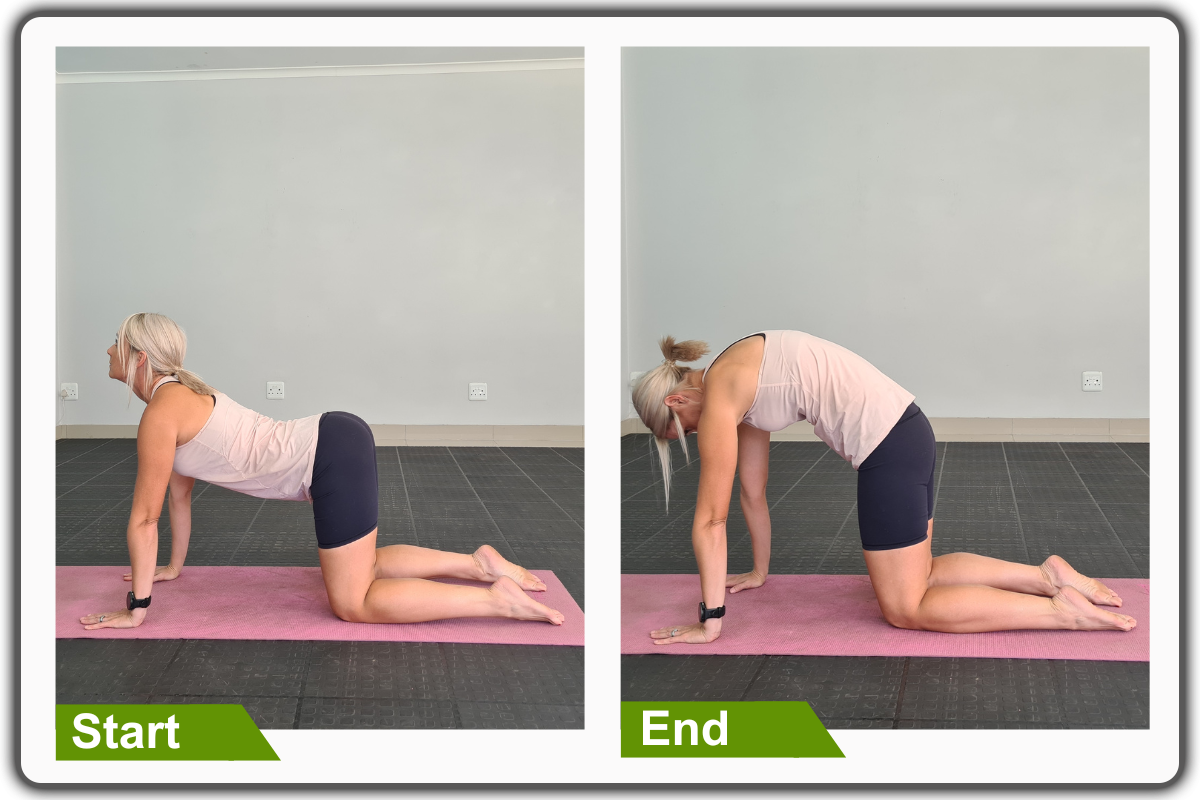
2. Standing Upper Back Stretch
Begin in an upright standing position with your feet hip-width apart. Maintain good alignment with your head, shoulders, hips, and legs. Extend both arms forward at shoulder height and interlace your fingers, palms facing away. Engage your core muscles and slowly bend your head forward. Gently pull your arms ahead to feel a deeper stretch between your shoulder blades. Maintain elbows bent and arms relaxed to avoid overstraining.
This is great for easing back and neck tension after long sitting periods.
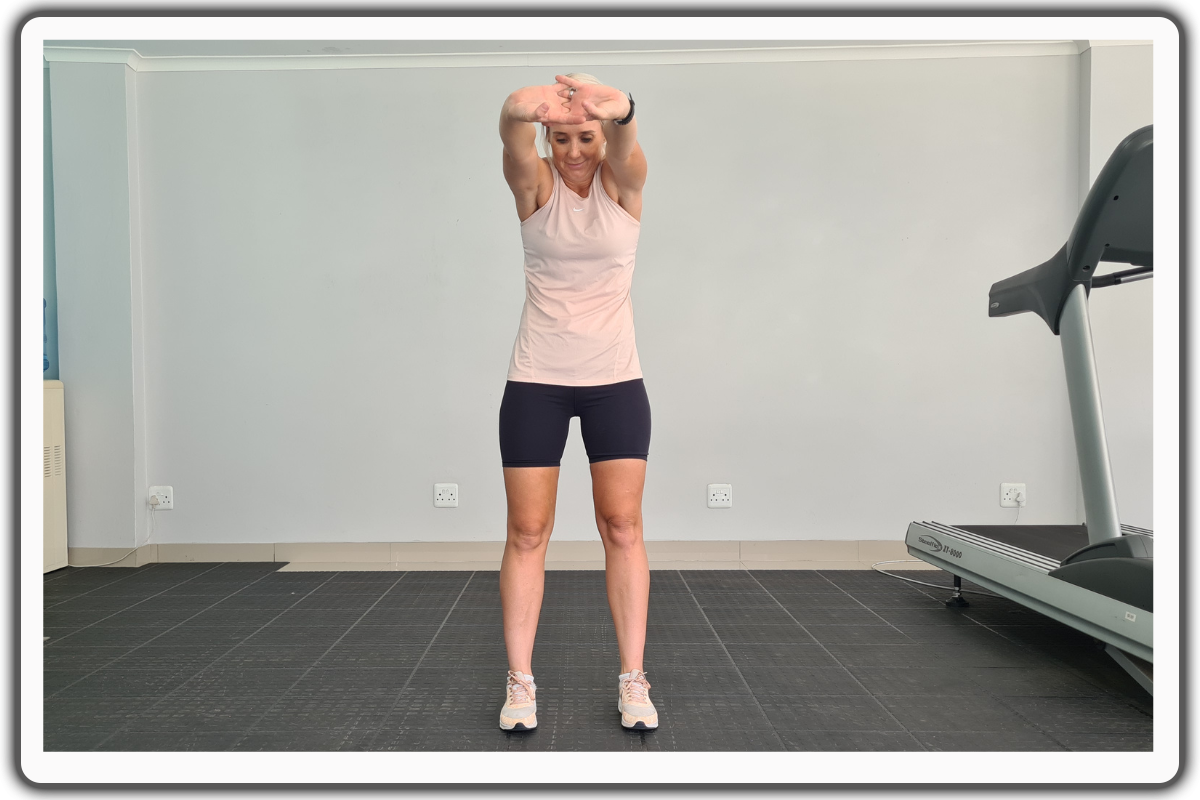
3. Foam Roller Thoracic Extension
Lie on your back with a foam roller placed under your mid-back. Keep knees bent and feet flat on the floor. Interlace your fingers behind your head and slowly roll up and down the upper back area. Take deep breaths as you roll and stop at tight spots.
This stretch improves mobility in the thoracic spine, helping to prevent pain and improve posture.
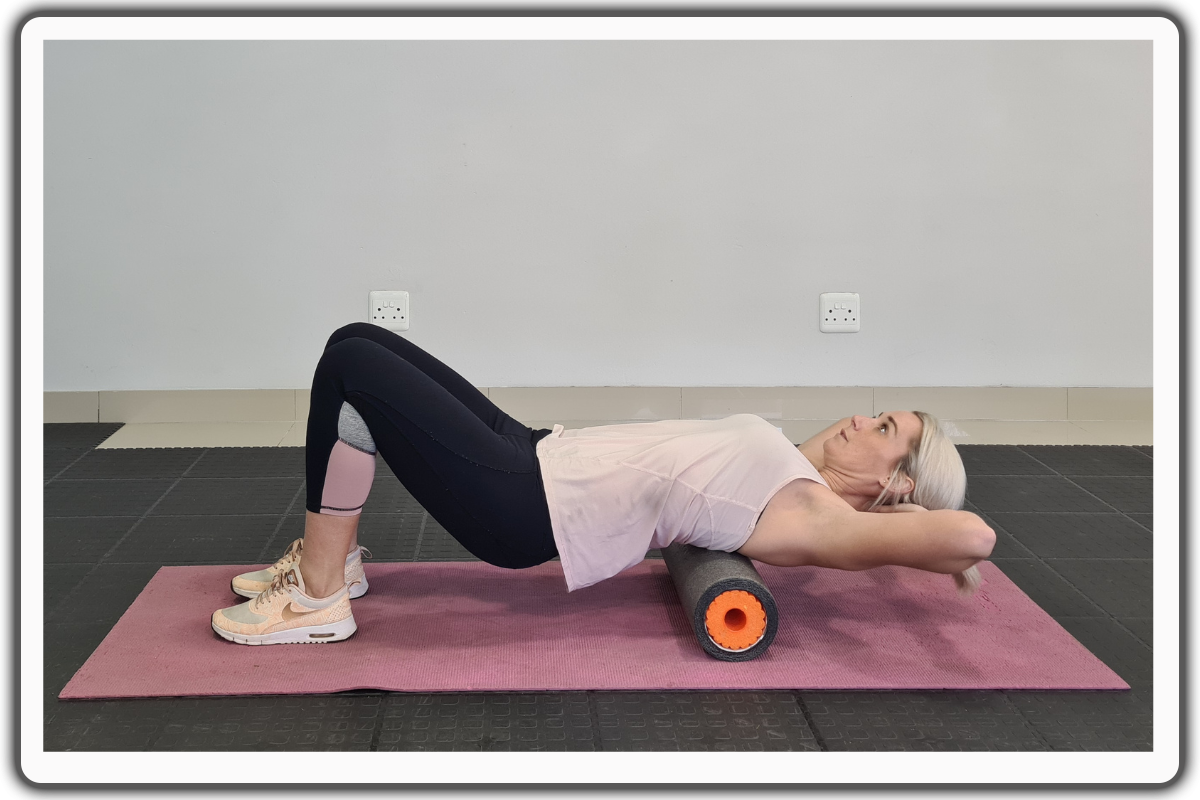
4. Child’s Pose
Begin in an upright kneeling position on the floor with your knees closed together, maintaining good alignment with your upper body. Tighten your abdominal area, shift your hips back to your feet, and extend your arms in front or place them on the sides. Lower your forehead to the floor, relaxing your mid-back area for a light stretch. Hold this position for several deep belly breaths, in through your nose and out through your mouth.
You can place a yoga block under your chest or head for added support.
Take deep breaths and hold this static stretching position for 30–60 seconds.
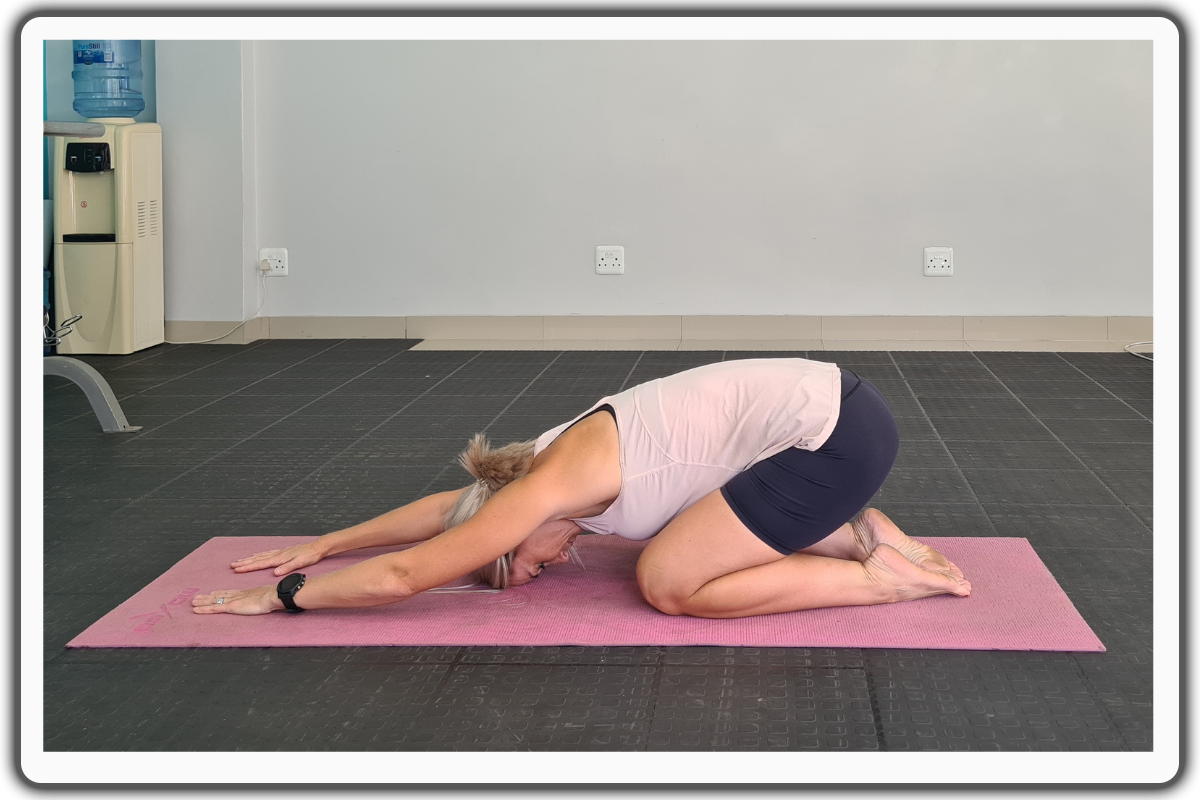
5. Shoulder Roll and Neck Rotation
This exercise targets the levator scapulae and upper trapezius.
Begin in a standing position with arms relaxed by your sides. Perform a shoulder roll in a circular motion forward, up, back, and down. Follow with gentle neck rotation — look over your right shoulder, then the left shoulder. Repeat 8–10 times to improve blood flow and muscle strength around your upper back.
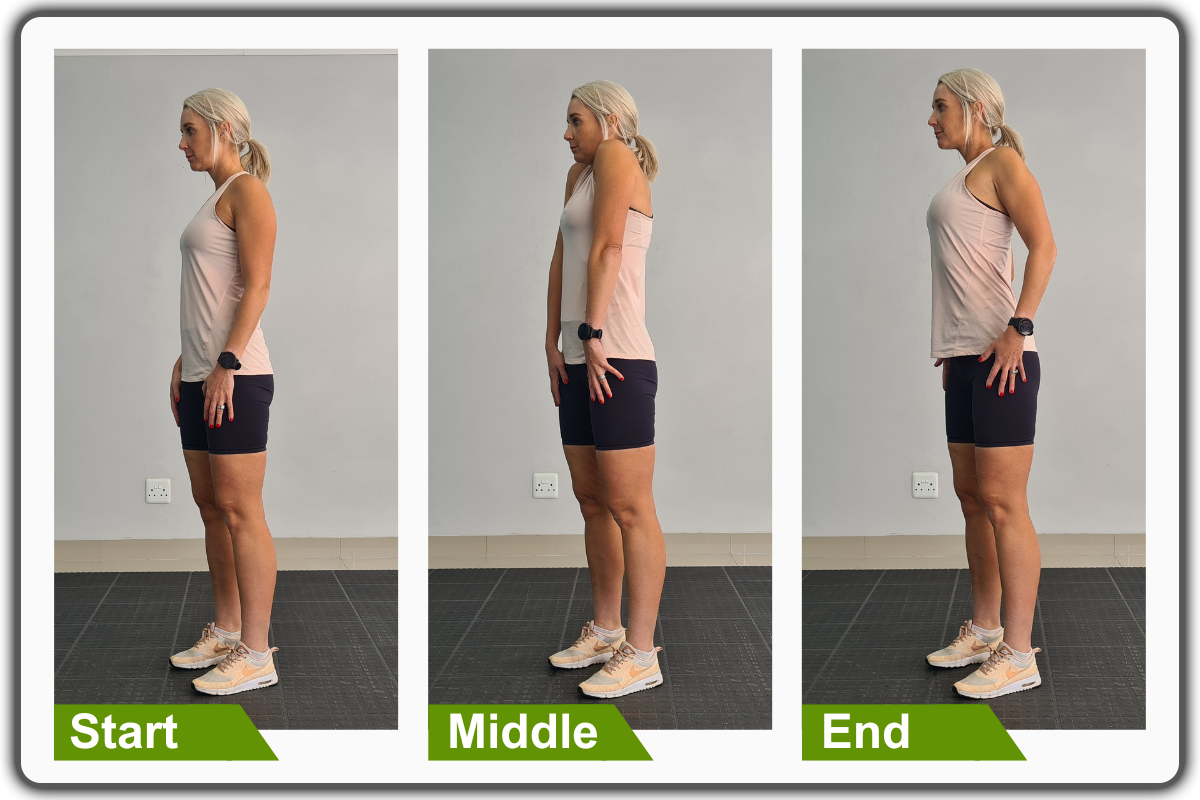
6. Overhead Arm Stretch
Begin in an upright standing position with your feet hip-width apart. Maintain good alignment with your head, shoulders, hips, and legs. Engage your core muscles. Raise one arm overhead as you bend your upper body to the side. Hold the position for a couple of seconds and repeat the movement on the opposite side.
This movement increases flexibility in the upper and mid back, relieving neck and shoulder pain.
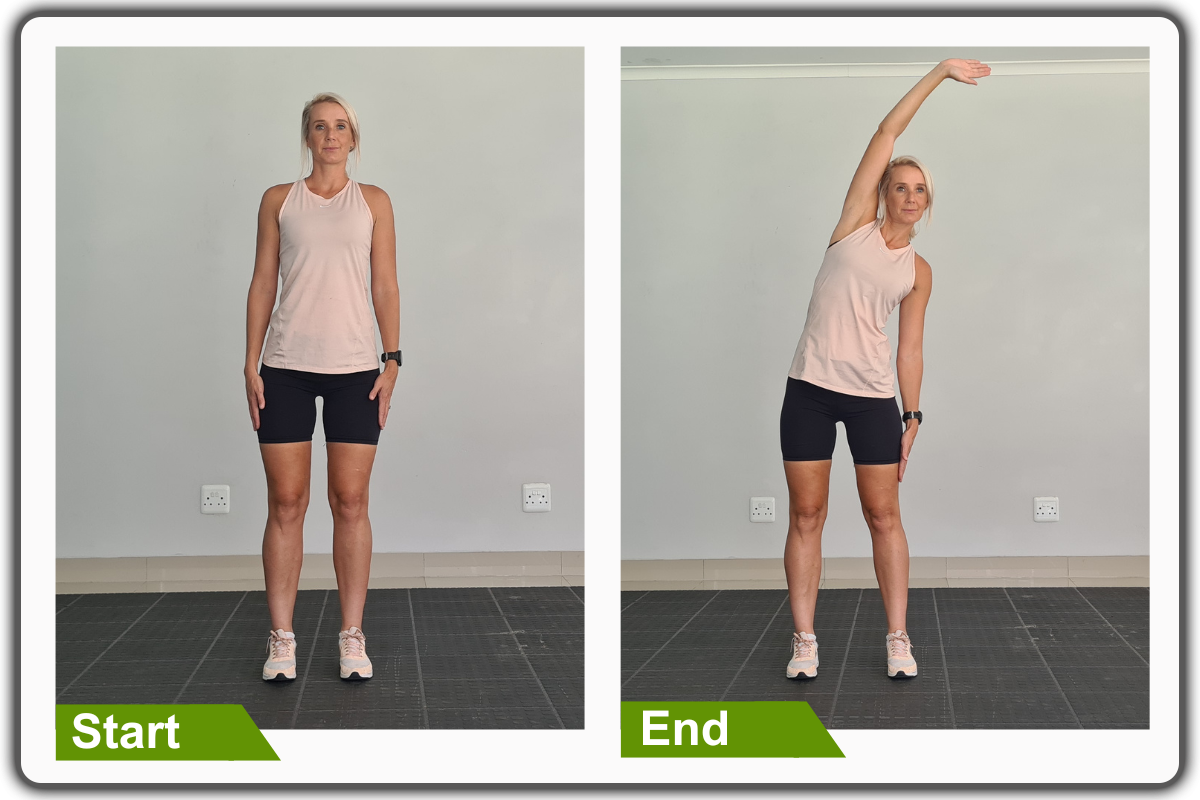
7. Cross-Body Stretch
Begin in an upright standing position with your feet hip-width apart. Maintain good alignment with your head, shoulders, hips, and legs. Engage your core muscles. Bring your right arm across your chest and use your left hand to gently pull it closer to your body. You should feel a stretch along the right shoulder and upper back. Hold for 15–20 seconds, then switch to the other side.
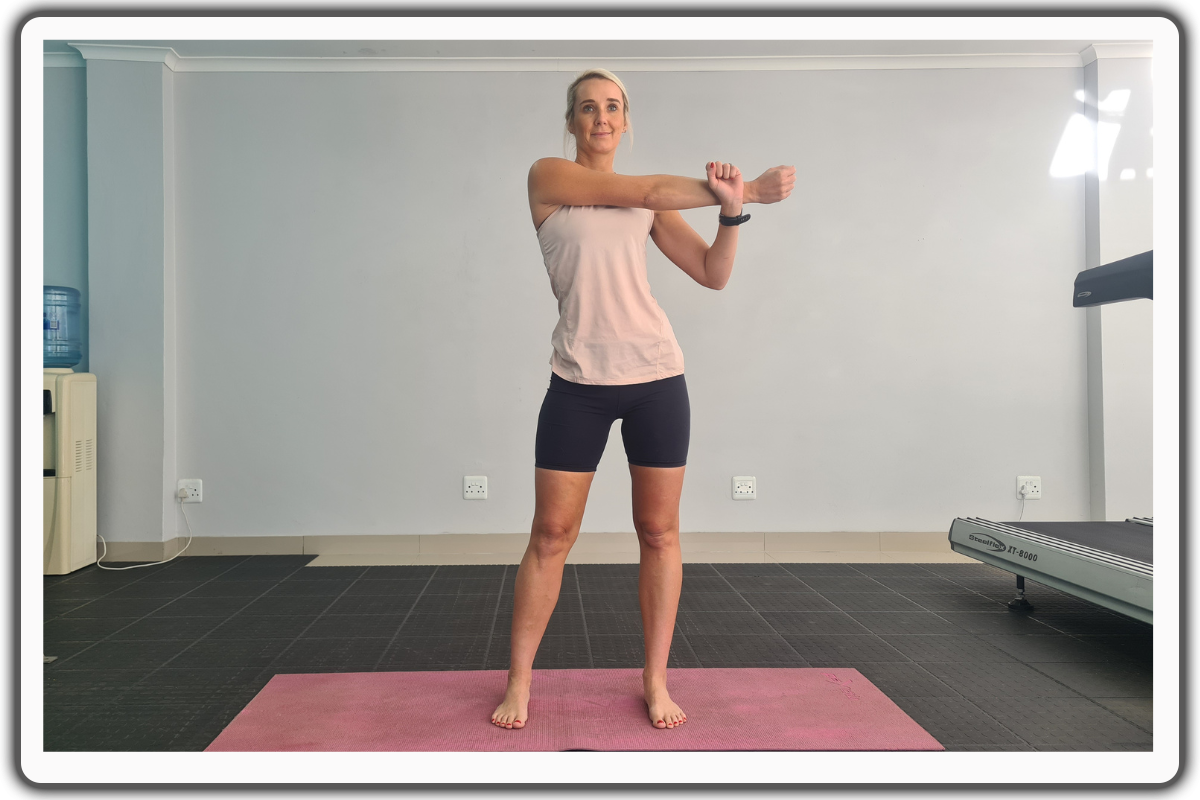
💡 Tips from a Physical Therapist
Always perform each stretch slowly—bend slowly, return slowly, and avoid bouncing.
Take deep breaths throughout to enhance relaxation and circulation.
If you feel sharp pain, stop immediately and consult a healthcare professional.
The following exercises work best when paired with light strengthening moves for the upper body.
Dr. Rachel Tavel, DPT, CSCS, a New York–based physical therapist and certified strength & conditioning specialist, explains, “The key to easing upper back pain isn’t just stretching, it’s about consistent movement and awareness. Many people sit for hours in one position, which tightens the upper trapezius and weakens the lower trapezius and thoracic stabilizing muscles. Combining thoracic extension stretches with light strengthening exercises helps restore balance and prevent pain before it starts.”
🧍♂️ Final Thoughts: Preventing Future Pain
The acute effects of stretching, such as immediate pain relief, are only part of the benefit. Consistent practice promotes better posture, improved muscle strength, and flexibility in the upper back and neck. Incorporate these movements into your exercise program at least three times a week to prevent pain and keep your upper back aligned and well-supported.
Remember: staying mindful of your posture and taking deep breaths while stretching can make a huge difference in your comfort and mobility.
FAQs
1. How often should I stretch my upper back?
You can safely stretch your upper back every day, especially if you sit for long periods. Aim for 5–10 minutes daily to improve flexibility and prevent pain.
2. What’s the best time of day to do upper back stretches?
Morning stretches help loosen stiff muscles, while evening routines relieve tension from daily activities. Choose a consistent time that fits your exercise program.
3. Can I do these stretches if I have neck pain too?
Yes—just move slowly and focus on controlled neck rotation and neck flexion. Avoid pushing into pain, and consult a healthcare professional if discomfort persists.
4. Do I need special equipment like a foam roller or yoga block?
No, but a foam roller or yoga block can enhance the deeper stretch and improve thoracic extension. A stable surface, like a chair or mat, works fine for beginners.
5. When should I see a physical therapist?
If your upper back pain lasts more than two weeks, limits daily activities, or spreads to your neck or arms, see a physical therapist or healthcare provider for an evaluation.
